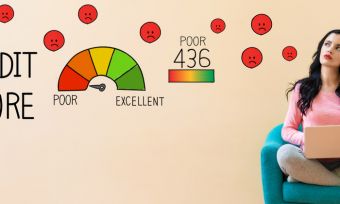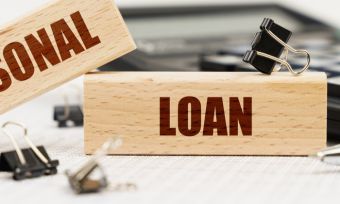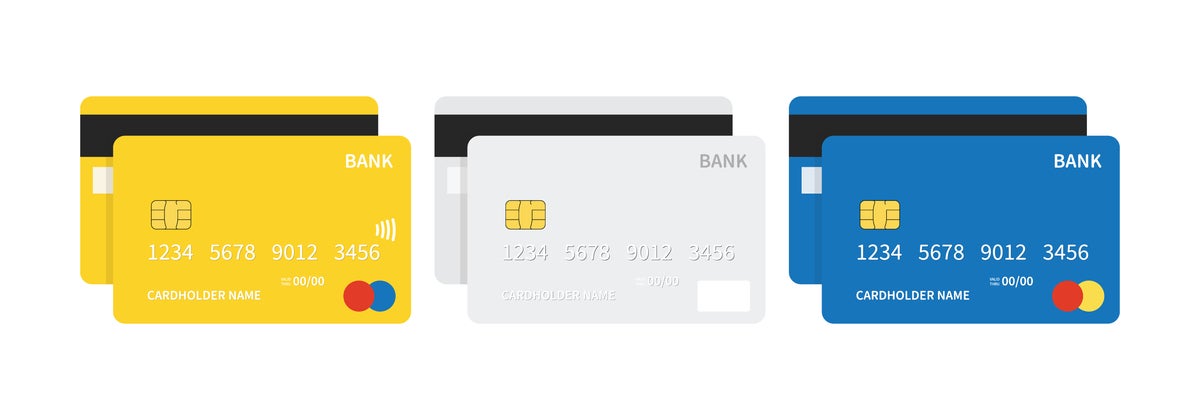Author: Tamika Seeto
If you are facing a big or unexpected cost, and don’t have enough cash on hand, you might consider borrowing money. But what options do you have? And what is the best way to borrow money in terms of overall cost?
In this article, we take a closer look at:
Remember that your ability to borrow money depends on your personal circumstances, including your income and credit score. Your credit score, whether good or bad, can impact the interest rate you are offered on a loan. However, there are steps you can take to improve your credit score if you need to.
→Related article: How Long Does It Take to Fix a Poor Credit Score?
Personal loans
A personal loan is typically used to pay for a big expense, such as buying a car, home renovations, a holiday or wedding. You are charged interest on the loan – which can be either at a fixed or variable rate – as well as various fees. These can include establishment and regular maintenance fees, plus charges for missed or early repayments.
Personal loans need to be repaid within a specific period, or loan term. Typically terms range from one to seven years. To pay off the loan, you need to make regular weekly, fortnightly or monthly repayments.
What is the average cost of a personal loan?
Here’s a rundown of the top unsecured loans with the lowest interest rates currently on Canstar’s database. The following figures are for a $10,000 unsecured loan in Auckland over a three-year term. (Rates & fees correct as of 12/01/22).
|
Lender |
Loan/Credit Range | Interest Rate | Application Fee | Monthly Repayment | Total Cost of Loan* |
| Harmoney | A1-A5 | 6.99% | $150 | $308.73 |
$11,114.28 |
|
Cooperative Bank |
A++ to A | 6.99% | $200 | $308.73 | $11,114.28 |
| Unity | Orange | 8.9% | $200 | $317.53 |
$11,431.08 |
|
Gem |
Personal Loan Unsecured | 8.99% | $240 | $317.95 | $11,446.20 |
| Harmoney | B1-B5 | 9.49% | $150 | $320.28 |
$11,530.08 |
|
Kiwibank |
Personal Loan | 9.95% | $240 | $322.44 | $11,607.84 |
| Cooperative Bank | B+ to B | 10.5% | $200 | $325.02 |
$11,700.72 |
|
Harmoney |
C1-C5 | 11.99% | $150 | $332.10 | $11,995.60 |
* Total loan costs are for principal and interest only, excluding fees and charges.
Possible advantages of a personal loan:
- Personal loans are repaid over a fixed term, so you have a set timeline for when your loan will be paid off
- If you choose a fixed-rate personal loan, your repayments will stay the same over the loan term
- The average personal loan interest rate tends to be lower than the average credit card interest rate
Possible disadvantages of a personal loan:
- You will be charged interest and fees
- Can’t increase the loan amount
- You need to borrow money for a specific, approved purpose
→Related article: Things to Consider Before Getting a Personal Loan

Credit cards
A credit card lets you access money up to an approved limit, provided you make the minimum repayment each month. Credit cards usually come with an interest-free period on purchases, such as up to 44 or 55 days. But if you don’t repay your credit card’s closing balance by the due date, you lose the interest-free period and are charged interest on your outstanding balance.
You may also be charged an annual fee and other charges, for late payments, cash advances and international transactions, depending on how you use the card.
What is the average cost of a credit card?
Across all the cards on Canstar’s database, interest rates range from 12.69% to a whopping 25.99% p.a. Annual fees range from $0, for no-frills, low-rate cards, such as the ANZ Low Rate Visa, up to $200-$300 for high-end rewards cards, such as the American Express Airpoints Platinum Card ($195 p.a.) and the Westpac Airpoints World Mastercard ($310 p.a.).
Possible advantages of a credit card:
- You can take advantage of interest-free periods and pay no interest on purchases for up to 55 days
- You have the flexibility to access funds as you need them, up to your approved limit
- Depending on the card you choose, you may be able to get extra perks, such as frequent flyer points. Some credit cards also include insurance cover, such as purchase protection insurance, extended warranty insurance and travel insurance
Possible disadvantages of a credit card:
- If you don’t repay your full closing balance by the due date, you will be charged interest. Credit card interest rates can be higher than other types of credit
- You may also be charged fees, such as annual fees
- You are only required to make a minimum repayment each month, so you need to set a clear plan to pay off your credit card debt
→Related article: Canstar Awards NZ’s Best Credit Cards
Overdrafts on bank accounts
A personal overdraft is linked to your transaction account and lets you access extra funds (up to an approved limit) if your account balance drops below zero. You are charged interest on the amount you use (rather than the entire limit). In addition, application and monthly administration fees may apply.
Overdrafts usually have no set minimum repayments. However, you should try to repay the amount you borrow as soon as possible, to reduce interest charges and fees.
What is the average cost of a personal overdraft?
Overdraft interest rates are some of the highest around. Plus many of the banks also charge ongoing monthly maintenance fees, pushing up costs further:
| Bank | Overdraft Rate p.a. | ||||||||
| TSB | From 15.39% variable | ||||||||
| Kiwibank | 16.9% | ||||||||
| The Cooperative Bank | 17.5% | ||||||||
| ANZ | 18.9% | ||||||||
| ASB | 19.5% | ||||||||
| BNZ | 19.95% | ||||||||
| Westpac | 19.95% | ||||||||
| Rates and fees correct as of 12/01/22. | |||||||||
Possible advantages of an overdraft:
- You have the flexibility to choose when you make your repayments
- Personal overdrafts can be useful in emergency situations and allow you to access funds as you need them
- A personal overdraft is connected to your transaction account, so you can easily access the funds, including from your debit card
Possible disadvantages of an overdraft:
- You are charged fees plus interest on the amount you borrow
- You can only borrow money if you have no money in your linked account
- No minimum repayments to make, so you need to be disciplined making repayments and clearing your debt
Line of credit home loans
Although it’s not an option for everyone, another way to borrow money is through a line of credit home loan. A line of credit home loan allows you to borrow money using the equity in your home.
Like a credit card, you can access money up to an approved limit and you don’t have to apply each time you want to borrow money. You will be charged interest on the amount you use and you may be charged fees. Some lenders let you make interest-only repayments, or allow the interest be added to your home loan (capitalised) up to your approved line of credit limit.
What is the average cost of a line of credit home loan?
Line of credit home loans usually have floating rate. And at time of writing, mid-January 2022, the average floating rate for owner-occupiers on Canstar’s mortgage database is 4.63%.
There are often application fees and monthly account maintenance fees involved. But these vary from lender to lender. For example, the ANZ currently doesn’t charge an application fee, just a $12.50 monthly account fee for its Flexible Home Loan.
Possible advantages of a home loan line of credit:
- Line of credit home loans have lower interest rates compared to other forms of borrowing, as they are usually based on lenders’ variable mortgage rates
- You have the flexibility to access funds as you need them, up to your approved limit
- You have the flexibility to choose how you make your repayments
Possible disadvantages of a home loan line of credit:
- Line of credit home loans usually have slightly higher interest rates than standard fixed-rate home loans
- You will be charged interest and fees
- If you make interest-only repayments, or if interest capitalisation is applied – when unpaid interest is added to the balance of the loan – you may end up paying more in the long term
Which option is best?
The best way to borrow money depends on your personal financial circumstances. Factors such as your credit score and income can impact your borrowing options and the interest rate you are offered.
But while the best way is invariably the cheapest way – the loan with the lowest fees and interest charges – you should also factor in the reason you are taking out the loan. Because some reasons for debt are regarded as more positive than others.
For example, if you are using a loan to help increase your wealth or earning capacity, that is an example of a good reason to take out a loan. This could mean you are borrowing money for education or training, to buy a home, or consolidate debt at a better rate. It could even mean using a car loan to purchase a more reliable car to use for a new, better-paid job that requires a longer commute.
Whereas, taking out a loan to finance luxury household items or clothing that will quickly depreciate in value is considered a poor reason for a loan. So always carefully consider what you are borrowing money for, and ensure you have a solid plan in place to repay the funds.
About the reviewer of this page
This report was reviewed by Canstar’s Editor, Bruce Pitchers. Bruce began his career writing about pop culture, and spent a decade in sports journalism. More recently, he’s applied his editing and writing skills to the world of finance and property. Prior to Canstar, he worked as a freelancer, including for The Australian Financial Review, the NZ Financial Markets Authority, and for real estate companies on both sides of the Tasman.
Enjoy reading this article?
Sign up to receive more news like this straight to your inbox.
By subscribing you agree to the Canstar Privacy Policy




Share this article